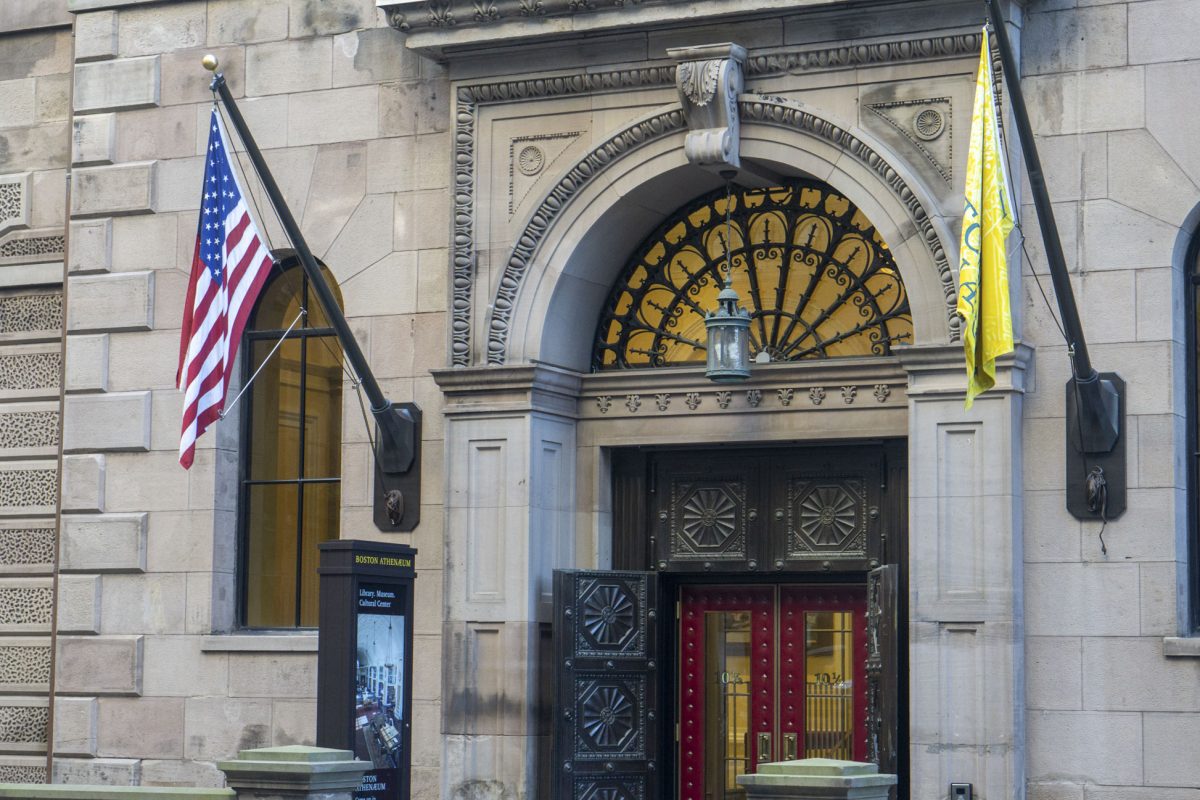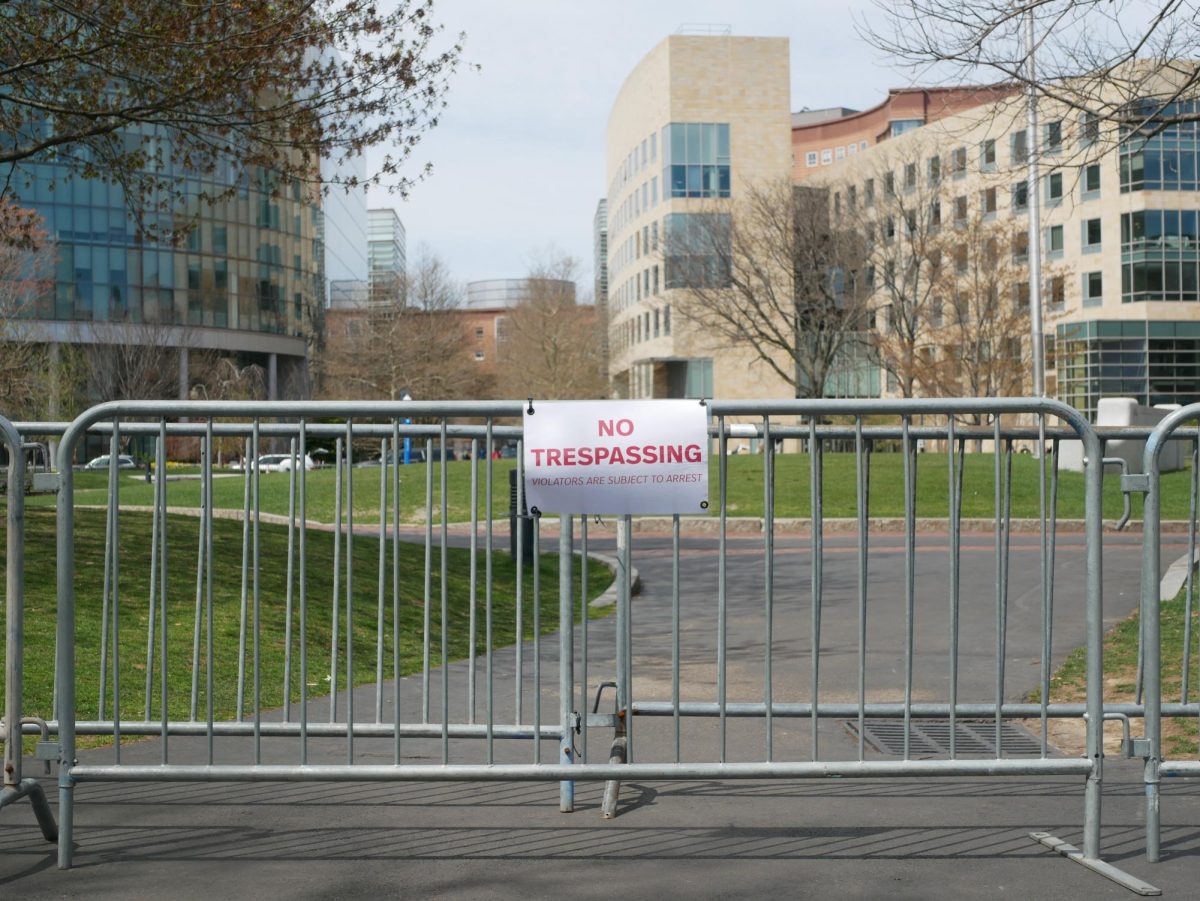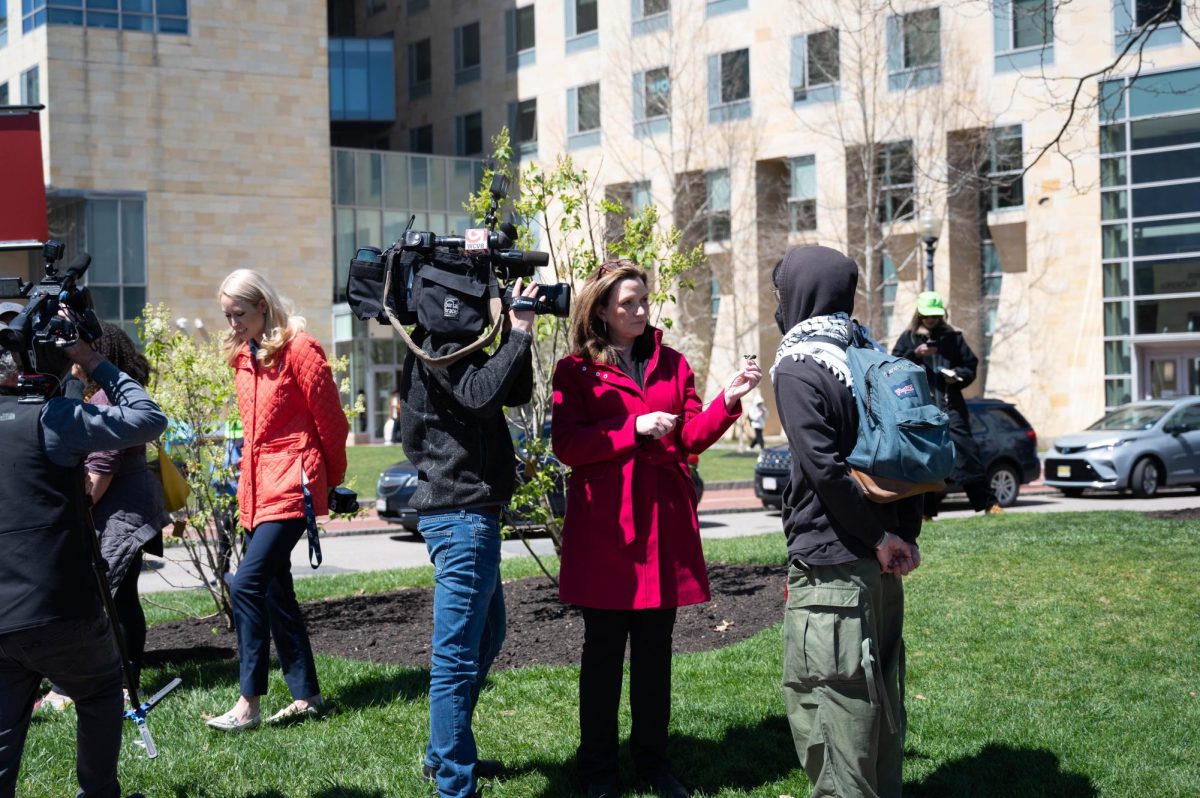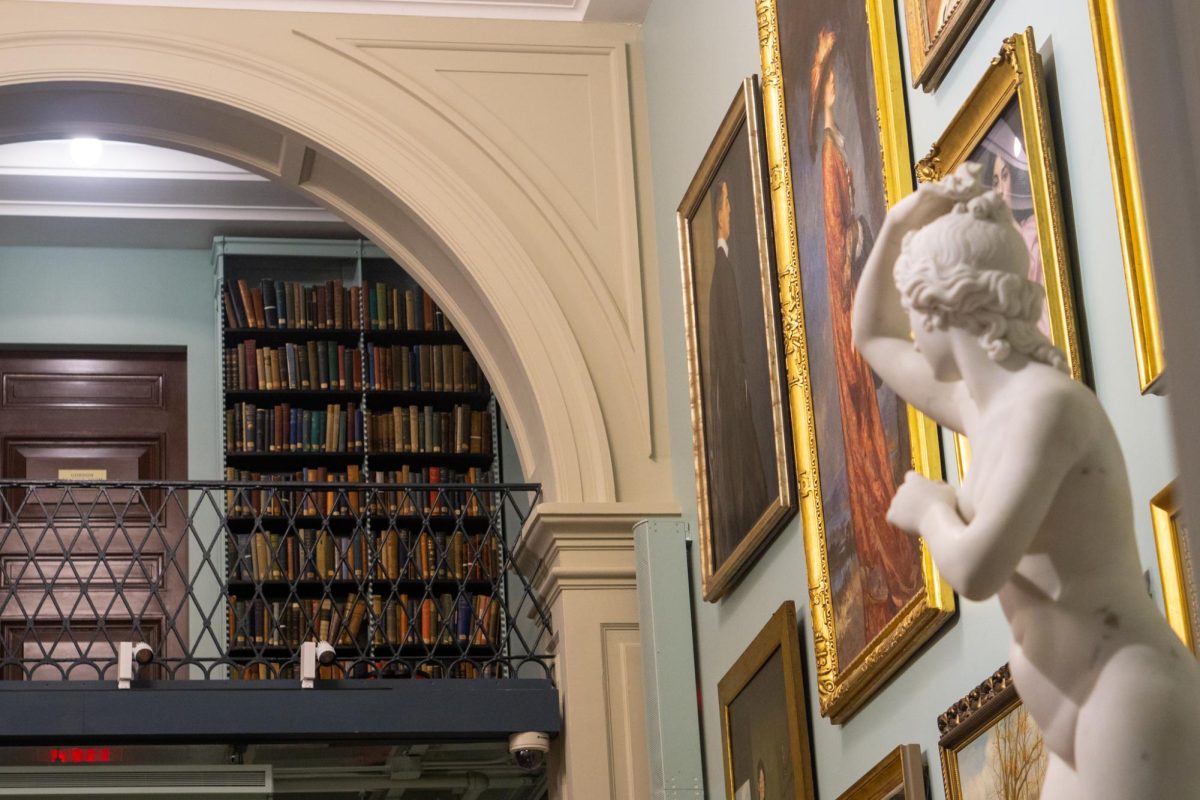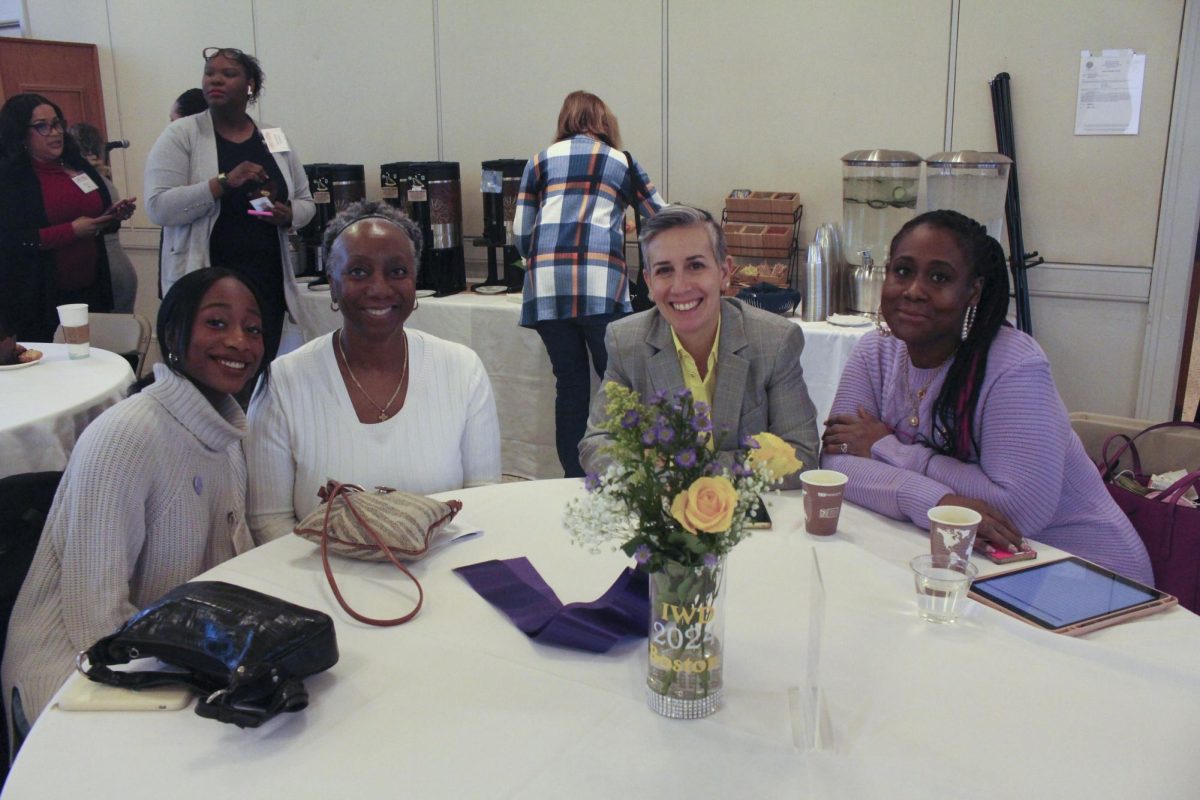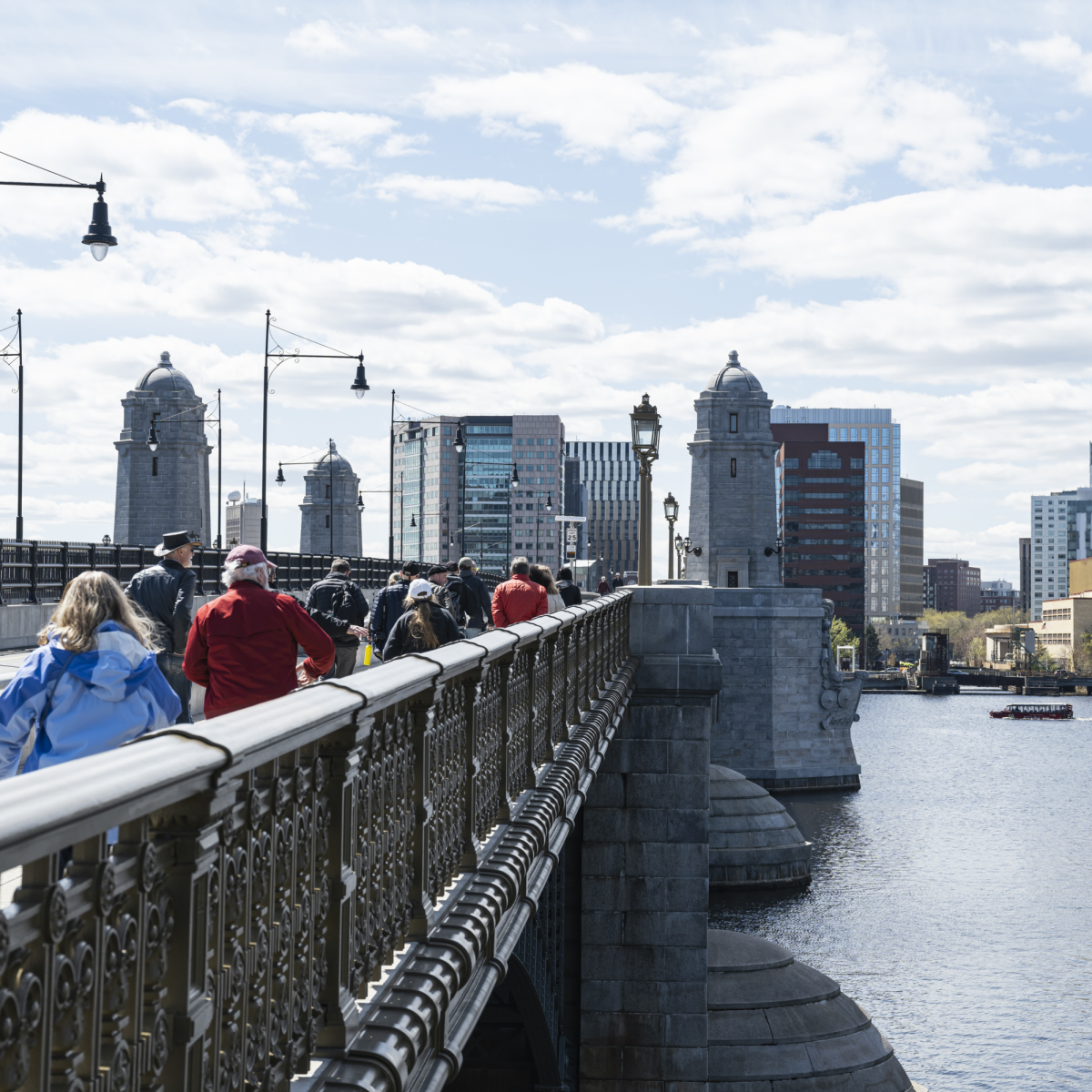With notable guests like John Adams and artifacts such as a skin-bound book from the 19th century, the Boston Athenaeum has served as a cultural and literary establishment spanning more than two centuries and several locations.
Founded in 1807, the Boston Athenaeum has a rich history of over 200 years and was permanently moved to Beacon Street in 1849. The library and museum has five floors filled with more than 200,000 rare books, pieces of art and other priceless writing materials from as far back as the 15th century.
Reference librarian Elizabeth O’Meara detailed some of the building’s history at 10 ½ Beacon St. “When it first opened, it was three floors. The first floor was statuary, the second floor was the library and the third floor was an art gallery because the Athenaeum was the place that exhibited art,” O’Meara said. The library has since added two more floors.
Many of the Athenaeum’s collections come from long-time donors or trustees of the building as they do not currently accept donations.
“We mostly have 18th century, but we have older books as well,” said Mary Warnement, the Athenaeum’s head of resources. “We have only a few handwritten books from the 15th century and early printed books from the 15th century.”
Older books produced in the 18th century and earlier are kept in a separate section for viewing as requested. A few of the rare collections housed at the Athenaeum include books from George Washington’s Mount Vernon library, a memoir bound by the skin of its author James Allen and a map derived from Lewis and Clark’s discoveries and the William Tudor papers, which are financial records detailing Tudor’s investments in gold and copper.
“From George Washington’s library we have his copy of Common Sense which was a pamphlet written by Thomas Paine making an argument for why we should revolt. To have that in Washington’s library, and he wrote his name at the top, is amazing,” Warnement said.

O’Meara described her favorite of the rare collections. “We have one of the best collections of artist’s books, which are basically books that are put together in all kinds of different ways by artists. They’re these great artifacts; they are incredibly cool. Our collection of artist’s books are what I find really fascinating,” O’Meara said.
Between the tall, looming shelves that cover the walls, people can be found studying at wooden desks or large plush chairs. The silent atmosphere provides a focused and breathtakingly beautiful environment to study, read, research or enjoy the many offerings of the Athenaeum.
The Athenaeum is a “calm, tranquill, and a good place to work as well as learn a lot,” said visitor Michael Altobelli. “They had very cool and very old books and I really appreciated the wide variety they had.”
Each floor is decorated with towering book cases filled with hundreds of books with leatherbound covers and gold lettering. Shiny marble sculptures and ginormous paintings cover the walls. Wooden desks are sporadically placed around each of the floors offering study space with the towering views surrounding the area.
Some of the prominent users included John Quincy Adams, Nathaniel Hawthorne, Louisa May Alcott and Margaret Fuller. Authors such as Jack Gantos, who has written novels such as “Hole in My Life” at the Athenaeum, have even used the building to produce some of their published works.
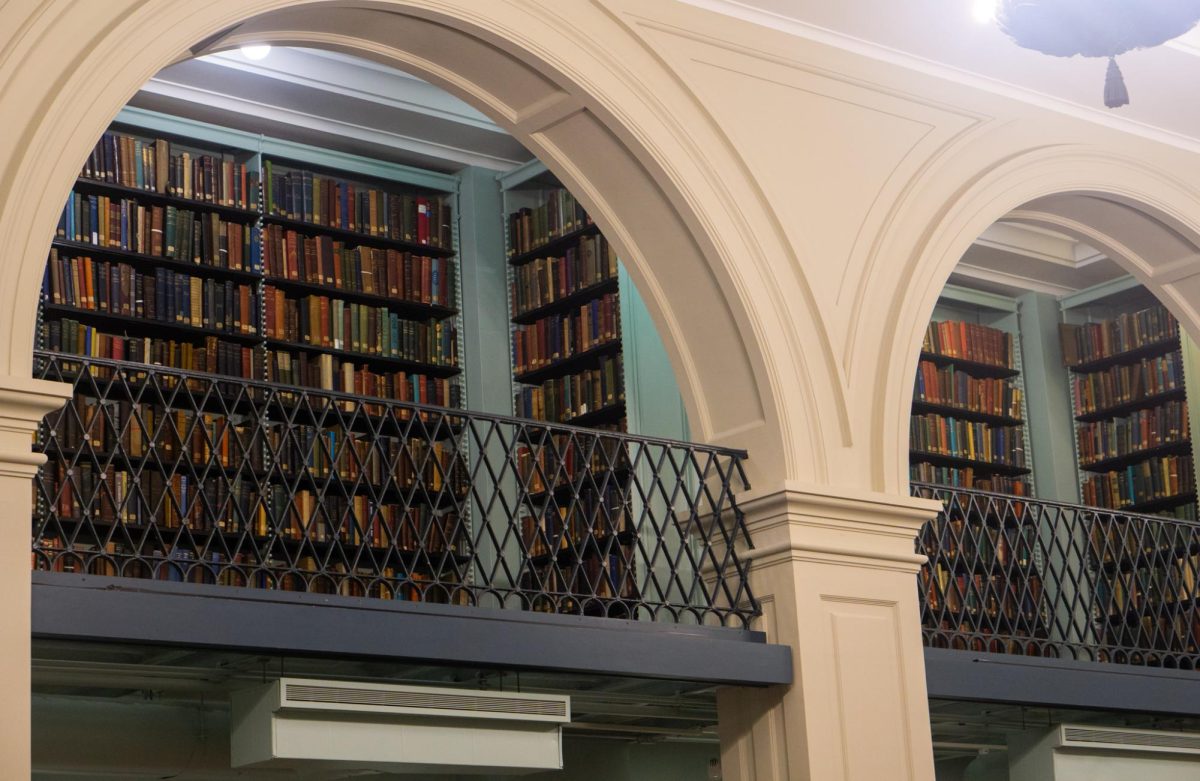
Unlike many libraries operating in the 19th century, the Athenaeum has operated under a family-style membership that has allowed women to use the space since it first opened. “There’s a myth that Hannah Adams, who was related to the Adams family, was the first woman allowed in, but that is not true. But the first woman to own a share outright was in 1822, but women have always been allowed in. I like to think of her as our first fellow,” Warnement said.
The Museum of Fine Arts, or MFA, was created by donors of the Athenaeum in the late 1800s to house some of the thousands of art pieces that the Athenaeum possessed. “We have always had that tension here between our art and books because we have always collected both. By the late 1800s the Fine Arts Committee here decided it was time for Boston to have its own art museum. They contributed a lot of the art that they had to the MFA, and the first few exhibits were actually held here,” O’Meara said.
Each collection in the Athenaeum contains unique hidden treasures that hold small pieces of history.
“One of the earliest books we have was published in 1493. It’s an amazing printed book, it’s very medieval, and it starts with Genesis and Biblical history, but it’s called the Nuremberg Chronicles and it’s telling the history of that particular city up until present day,” Warnement said. “The author left blank pages at the end because he assumed there would be other history. I think that is a very cool item.”
The Athenaeum’s many collections span more than five centuries of art, literature and historical documentation. Hidden around a corner in Beacon Hill sits this large building where intellectuals, observers and the like have gathered for two centuries. Within its walls are shelves filled with small tokens of history.
